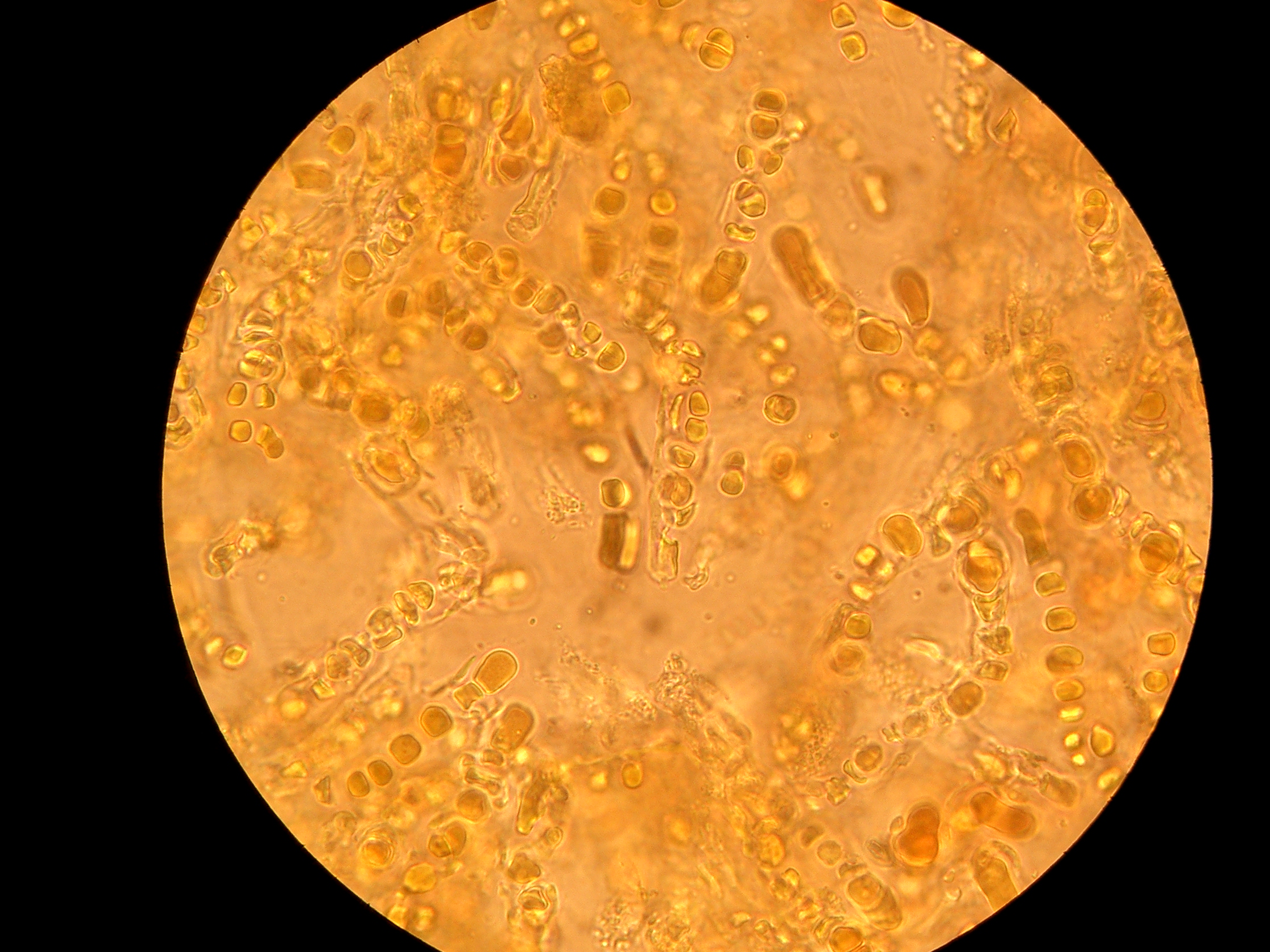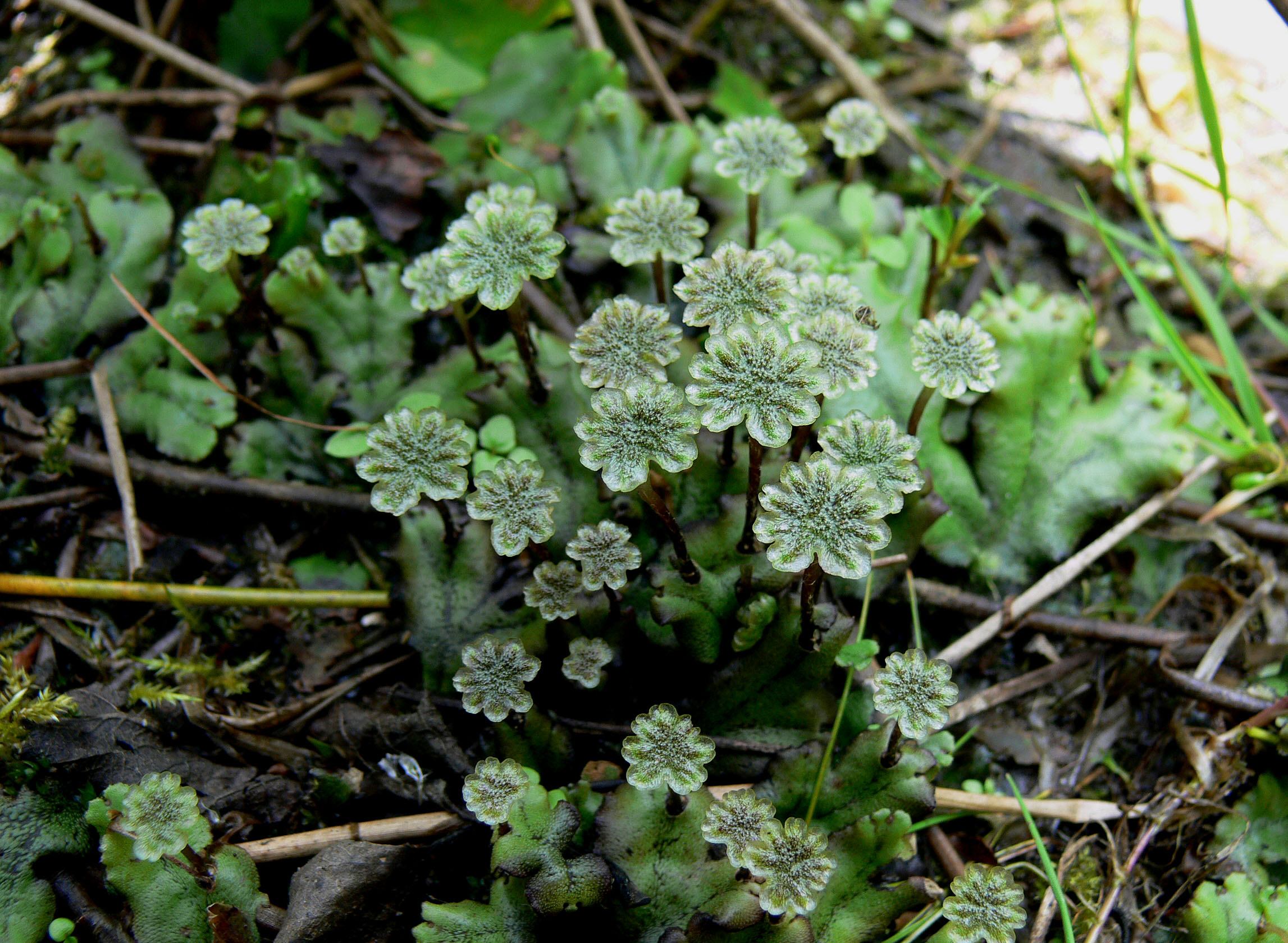|
Cora Arachnodavidea
''Cora arachnodavidea'' is a species of basidiolichen in the family Hygrophoraceae. It was formally described as a new species in 2016 by Bibiana Moncada, Manuela Dal Forno, and Robert Lücking. The specific epithet alludes to the arachnoid surface of the thallus, and also refers to mycologist David Leslie Hawksworth. The lichen is only known to occur in the páramo of Guasca in Colombia, where it grows on the ground in sheltered places between plants and bryophyte The Bryophyta s.l. are a proposed taxonomic division containing three groups of non-vascular land plants ( embryophytes): the liverworts, hornworts and mosses. Bryophyta s.s. consists of the mosses only. They are characteristically limited ...s. References arachnodavidea Lichen species Lichens described in 2016 Lichens of Colombia Taxa named by Robert Lücking Basidiolichens Taxa named by Manuela Dal-Forno {{Hygrophoraceae-stub ... [...More Info...] [...Related Items...] OR: [Wikipedia] [Google] [Baidu] |
Robert Lücking
Robert Lücking (born 1964) is a German lichenologist. He is a leading expert on foliicolous lichens–lichens that live on leaves. Life and career Born in Ulm in 1964, Lücking earned both his master's (1990) and PhD degree (1994) at the University of Ulm. Both degrees concerned the taxonomy, ecology, and biodiversity of foliicolous lichens. His graduate supervisor was mycologist and bryologist Sieghard Winkler, who had previously studied epiphyllous (upper leaf-dwelling) fungi in El Salvador and Colombia. In 1996 Lücking was awarded the Mason E. Hale award for an "outstanding doctoral thesis presented by a candidate on a lichenological theme". His thesis was titled ''Foliikole Flechten und ihre Mikrohabitatpraferenzen in einem tropischen Regenwald in Costa Rica'' ("Foliicolous lichens and their microhabitat preferences in a tropical rainforest in Costa Rica"). In this work, Lücking recorded 177 foliicolous lichen species from the shrub layer in a Costa Rican tropical forest. L ... [...More Info...] [...Related Items...] OR: [Wikipedia] [Google] [Baidu] |
Guasca
Guasca is a Colombian town and municipality in the Guavio Province, part of the Cundinamarca Department located approximately 55 km from Bogotá passing through the town of La Calera, Cundinamarca or 65 km passing through Sopó. Guasca borders the municipalities Tocancipá and Guatavita in the north, Junín in the east, in the south La Calera and in the west Sopó.Official website Guasca - accessed 05-05-2016 History Before the of the central highlands of the Colombian , the |
Taxa Named By Robert Lücking
In biology, a taxon (back-formation from ''taxonomy''; plural taxa) is a group of one or more populations of an organism or organisms seen by taxonomists to form a unit. Although neither is required, a taxon is usually known by a particular name and given a particular ranking, especially if and when it is accepted or becomes established. It is very common, however, for taxonomists to remain at odds over what belongs to a taxon and the criteria used for inclusion. If a taxon is given a formal scientific name, its use is then governed by one of the nomenclature codes specifying which scientific name is correct for a particular grouping. Initial attempts at classifying and ordering organisms (plants and animals) were set forth in Carl Linnaeus's system in ''Systema Naturae'', 10th edition (1758), as well as an unpublished work by Bernard and Antoine Laurent de Jussieu. The idea of a unit-based system of biological classification was first made widely available in 1805 in the intro ... [...More Info...] [...Related Items...] OR: [Wikipedia] [Google] [Baidu] |
Lichens Of Colombia
A lichen ( , ) is a composite organism that arises from algae or cyanobacteria living among filaments of multiple fungi species in a mutualistic relationship.Introduction to Lichens – An Alliance between Kingdoms . University of California Museum of Paleontology. Lichens have properties different from those of their component organisms. They come in many colors, sizes, and forms and are sometimes plant-like, but are not s. They may have tiny, leafless branches (); flat leaf-like structures ( [...More Info...] [...Related Items...] OR: [Wikipedia] [Google] [Baidu] |
Lichens Described In 2016
A lichen ( , ) is a composite organism that arises from algae or cyanobacteria living among filaments of multiple fungi species in a mutualistic relationship.Introduction to Lichens – An Alliance between Kingdoms . University of California Museum of Paleontology. Lichens have properties different from those of their component organisms. They come in many colors, sizes, and forms and are sometimes plant-like, but are not s. They may have tiny, leafless branches (); flat leaf-like structures ( |
Cora
Cora may refer to: Science * ''Cora'' (fungus), a genus of lichens * ''Cora'' (damselfly), a genus of damselflies * CorA metal ion transporter, a Mg2+ influx system People * Cora (name), a given name and surname * Cora E. (born 1968), German hip-hop artist * Sexy Cora or Carolin Ebert (1987–2011), German actress, model, singer Places United States * Cora, Illinois * Cora, Kansas * Cora, Missouri * Cora, West Virginia * Cora, Washington * Cora, Wyoming Other places * Cora (Ancient Latin town), an ancient town in Latium (Italy) * Cori, Lazio, Italy Other uses * 504 Cora, a metallic asteroid from the middle region of the asteroid belt * Cora (hypermarket), a retail group of hypermarkets in Europe * Cora (instrument), an alternative spelling of the West African musical instrument Kora * ''Cora'' (opera), a 1791 opera by Étienne Méhul, libretto by Valadier * Cora (restaurant), a Canadian chain of casual restaurants * Cora (rocket), a French rocket * ''Cora'' (1812 ship), a ... [...More Info...] [...Related Items...] OR: [Wikipedia] [Google] [Baidu] |
Bryophyte
The Bryophyta s.l. are a proposed taxonomic division containing three groups of non-vascular land plants ( embryophytes): the liverworts, hornworts and mosses. Bryophyta s.s. consists of the mosses only. They are characteristically limited in size and prefer moist habitats although they can survive in drier environments. The bryophytes consist of about 20,000 plant species. Bryophytes produce enclosed reproductive structures (gametangia and sporangia), but they do not produce flowers or seeds. They reproduce sexually by spores and asexually by fragmentation or the production of gemmae. Though bryophytes were considered a paraphyletic group in recent years, almost all of the most recent phylogenetic evidence supports the monophyly of this group, as originally classified by Wilhelm Schimper in 1879. The term ''bryophyte'' comes . Terminology The term "Bryophyta" was first suggested by Braun in 1864. G.M. Smith placed this group between Algae and Pteridophyta. Features ... [...More Info...] [...Related Items...] OR: [Wikipedia] [Google] [Baidu] |
Páramo
Páramo () can refer to a variety of alpine tundra ecosystems located in the Andes Mountain Range, South America. Some ecologists describe the páramo broadly as "all high, tropical, montane vegetation above the continuous timberline". A narrower term classifies the páramo according to its regional placement in the northern Andes of South America and adjacent southern Central America. The páramo is the ecosystem of the regions above the continuous forest line, yet below the permanent snowline. It is a "Neotropical high mountain biome with a vegetation composed mainly of giant rosette plants, shrubs and grasses". According to scientists, páramos may be " evolutionary hot spots", that meaning that it's among the fastest evolving regions on Earth. Location The Northern Andean Páramo global ecoregion includes the Cordillera Central páramo (Ecuador, Peru), Santa Marta páramo (Colombia), Cordillera de Merida páramo (Venezuela) and Northern Andean páramo (Colombia, Ecuado ... [...More Info...] [...Related Items...] OR: [Wikipedia] [Google] [Baidu] |
Basidiolichen
Basidiolichens are lichenized members of the Basidiomycota, a much smaller group of lichens than the far more common ascolichens in the Ascomycota. In arctic, alpine, and temperate forests, the most common basidiolichens are in the agaric genus ''Lichenomphalia'' (including former members of '' Omphalina'' or '' Gerronema'') and the clavarioid genus '' Multiclavula''. Several lichenized genera occur in tropical regions, the most common being the foliose '' Dictyonema''. Previously basidiolichens had been classified in their own subclass, Basidiolichenes. Molecular based phylogeny A phylogenetic tree (also phylogeny or evolutionary tree Felsenstein J. (2004). ''Inferring Phylogenies'' Sinauer Associates: Sunderland, MA.) is a branching diagram or a tree showing the evolutionary relationships among various biological spe ... does not support classification of the genera together. References External linksBioImagesSeveral photos of ''Lichenomphalia umbellifera''New Zea ... [...More Info...] [...Related Items...] OR: [Wikipedia] [Google] [Baidu] |
David Leslie Hawksworth
David Leslie Hawksworth (born 1946 in Sheffield, UK) is a British mycologist and lichenologist currently with a professorship in the Universidad Complutense de Madrid in Madrid, Spain and also a Scientific Associate of The Natural History Museum in London. In 2002, he was honoured with an Acharius Medal by the International Association for Lichenology. He married Patricia Wiltshire, a leading forensic ecologist and palynologist in 2009. , he is the Editor-in-Chief of the journals '' IMA Fungus'' and ''Biodiversity and Conservation ''Biodiversity and Conservation'' is a peer-reviewed scientific journal covering all aspects of biological diversity, its conservation, and sustainable use. It was established in 1992 and is published by Springer Science+Business Media. Abstractin ...''. Selected publications Articles * * * * * * * * Books and monographs * with Francis Rose: * with David J. Hill: as editor * with B. W. Ferry and M. S. Baddeley: * * with Alan T. Bull: ... [...More Info...] [...Related Items...] OR: [Wikipedia] [Google] [Baidu] |
Thallus
Thallus (plural: thalli), from Latinized Greek (), meaning "a green shoot" or " twig", is the vegetative tissue of some organisms in diverse groups such as algae, fungi, some liverworts, lichens, and the Myxogastria. Many of these organisms were previously known as the thallophytes, a polyphyletic group of distantly related organisms. An organism or structure resembling a thallus is called thalloid, thallodal, thalliform, thalline, or thallose. A thallus usually names the entire body of a multicellular non-moving organism in which there is no organization of the tissues into organs. Even though thalli do not have organized and distinct parts ( leaves, roots, and stems) as do the vascular plants, they may have analogous structures that resemble their vascular "equivalents". The analogous structures have similar function or macroscopic structure, but different microscopic structure; for example, no thallus has vascular tissue. In exceptional cases such as the Lemnoid ... [...More Info...] [...Related Items...] OR: [Wikipedia] [Google] [Baidu] |





